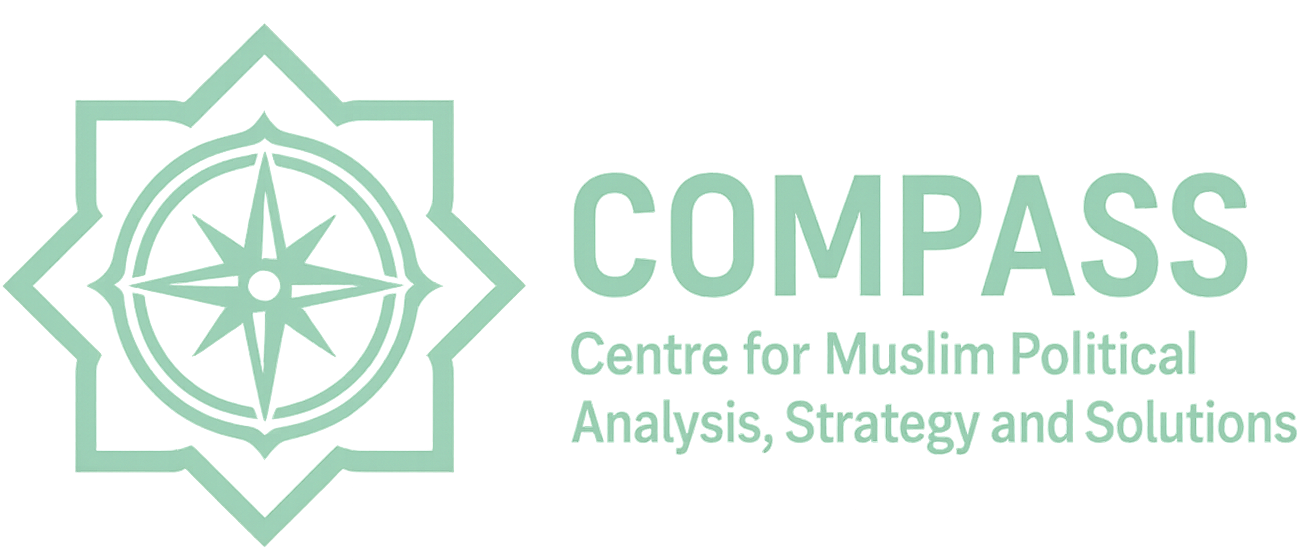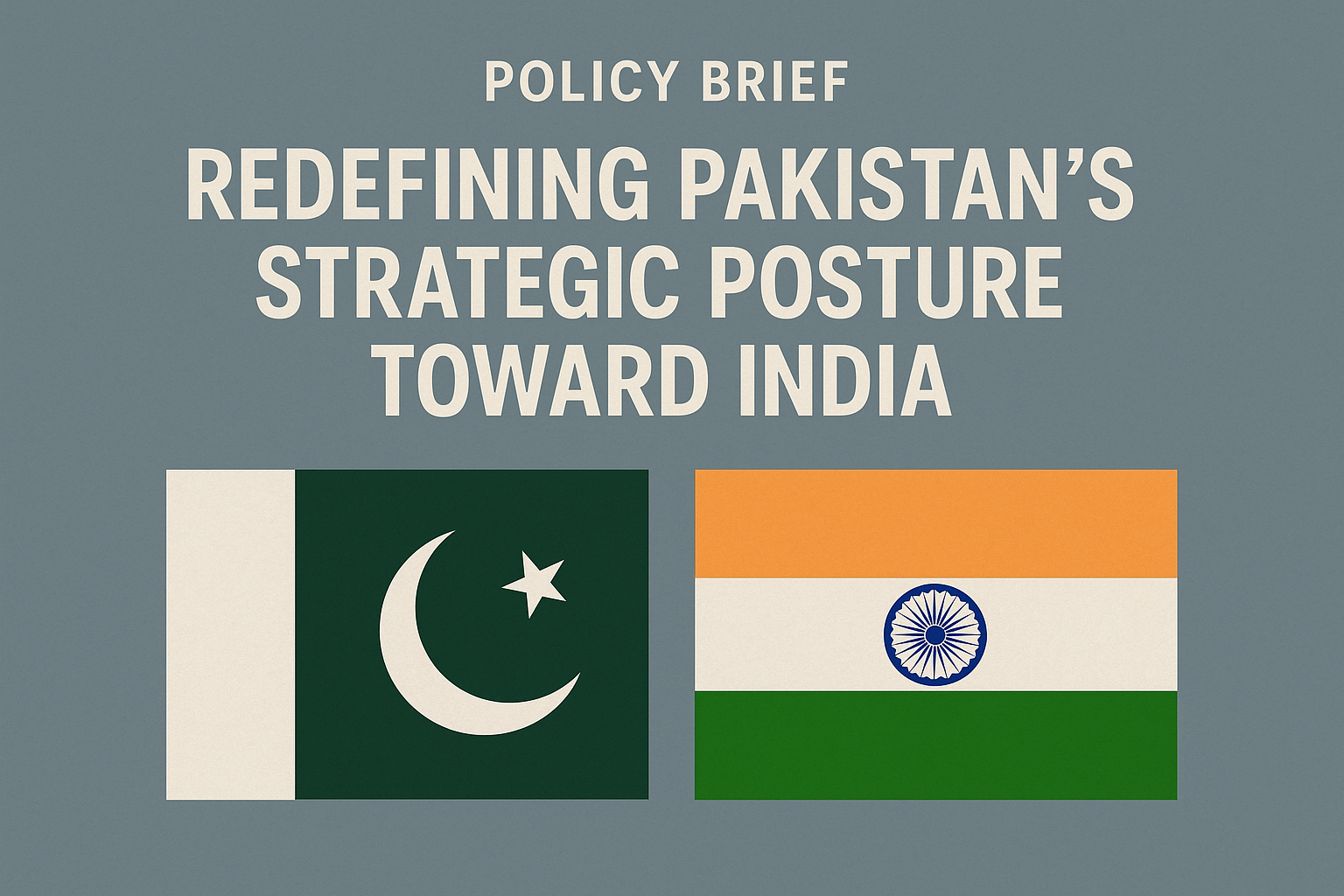Policy Brief: Redefining Pakistan’s Strategic Posture Toward India
________________
Executive Summary
For over seventy years, Pakistan has pursued a primarily defensive posture in its strategic dealings with India. This paradigm, once rationalized by asymmetric military capacities and a desire to maintain regional stability, has now reached a point of diminishing returns. India’s increasing regional aggression, internal militarization, and diplomatic assertiveness—most recently seen in its illegal actions in Kashmir and cross-border belligerence—demand a recalibration of Pakistan’s strategic doctrine.
This brief contends that Pakistan must adopt an assertive, offensive strategy that redefines the balance of power in South Asia, neutralizes existential threats, and repositions Pakistan as a proactive regional actor.
________________
Strategic Context
- India’s Military Adventurism: The frequency and intensity of India’s military provocations—from surgical strikes to air incursions—highlight the failure of a purely reactive defense policy.
- Kashmir’s Evolving Status: The 2019 abrogation of Article 370 ended any illusion of Indian commitment to negotiated settlement.
- Shifting Alliances: India’s growing ties with the U.S., Israel, and the Quad have shifted the regional security architecture to Pakistan’s disadvantage.
- Internal Indian Fault Lines: Rising communalism, regional separatism, and socio-economic inequality in India present opportunities for strategic exploitation.
________________
Policy Recommendations
1. Abandon Defensive Doctrine
Pakistan must transition from a reactive defense strategy to an anticipatory, offensive doctrine. This includes:
- Reorganizing military planning around pre-emptive strike capability.
- Enhancing regional deterrence through power projection in disputed areas.
- Integrating political, cyber, and information warfare as core pillars of strategic planning.
2. Annex Indian-Occupied Kashmir
A bold move to reclaim Kashmir could transform the strategic balance. Potential outcomes include:
- Water Security: Control over three critical rivers (Jhelum, Chenab, and Indus tributaries) critical for Pakistan’s agriculture and hydropower.
- Humanitarian Legitimacy: Ending Indian state violence against Kashmiri Muslims.
- CPEC Security: Neutralizing threats to infrastructure and economic investments in northern Pakistan.
- Geostrategic Reach: Gaining direct overland access to Central Asia via Gilgit-Baltistan.
3. Forge Strategic Ties with Bangladesh
By deepening bilateral cooperation with Dhaka, Pakistan can:
- Exploit historical grievances from the 1971 conflict.
- Coordinate pressure campaigns that destabilize the Siliguri Corridor (“chicken’s neck”), isolating India’s northeastern states from the mainland.
- Promote alternative trade corridors through Bangladesh-China-Pakistan cooperation.
4. Deepen Partnership with Sri Lanka
Pakistan should increase investments and defense cooperation with Sri Lanka to:
- Counterbalance India’s maritime influence in the Indian Ocean.
- Support Colombo’s control over Adam’s Bridge, reducing Indian naval access.
- Use shared grievances over Indian interference to foster a long-term alliance.
5. Engage with Indian Muslims as Strategic Stakeholders
India’s Muslim population—over 200 million strong—faces increasing marginalization under Hindutva rule. Pakistan should:
- Use cultural diplomacy, media, and digital platforms to cultivate soft power.
- Support civil society initiatives that highlight discrimination and promote resistance.
- Frame Pakistani regional ambitions as aligned with Muslim empowerment in the subcontinent.
6. Deepen Strategic Cooperation with China
The Sino-Pak relationship must evolve into a full-spectrum partnership:
- Expand defense collaboration including joint production of air defense systems and naval capabilities.
- Integrate CPEC Phase II with Chinese Belt and Road Initiative goals.
- Coordinate South Asian diplomacy to isolate India regionally and economically.
7. Encourage Chinese Military Posturing Near India
Pakistan should actively encourage China to maintain high-intensity deployments along the Line of Actual Control (LAC) to:
- Split India’s strategic focus across two frontiers.
- Strain Indian defense logistics and budget.
- Provide Pakistan with operational breathing space for actions along the LoC.
8. Support Secessionist Movements in India
Covert support to separatist causes within India is a strategic necessity:
- Khalistan Movement: Leverage Sikh discontent to disrupt Punjab and dilute Indian military focus.
- Assam and Northeast: Fuel autonomy and independence efforts in historically restive areas.
- Use diaspora networks and international forums to amplify internal dissent.
________________
Conclusion
The current moment offers Pakistan a strategic opening to redefine its relationship with India—not from a position of reaction, but of leadership. An offensive doctrine is not synonymous with recklessness. Rather, it represents a calibrated and multidimensional posture grounded in realism, national interest, and historical justice.
To implement this vision, Pakistan’s leadership must adopt a bold political mindset—one committed to long-term sovereignty, regional dominance, and a proactive foreign policy. The age of strategic hesitation must end. A new era of confident assertion must begin.



